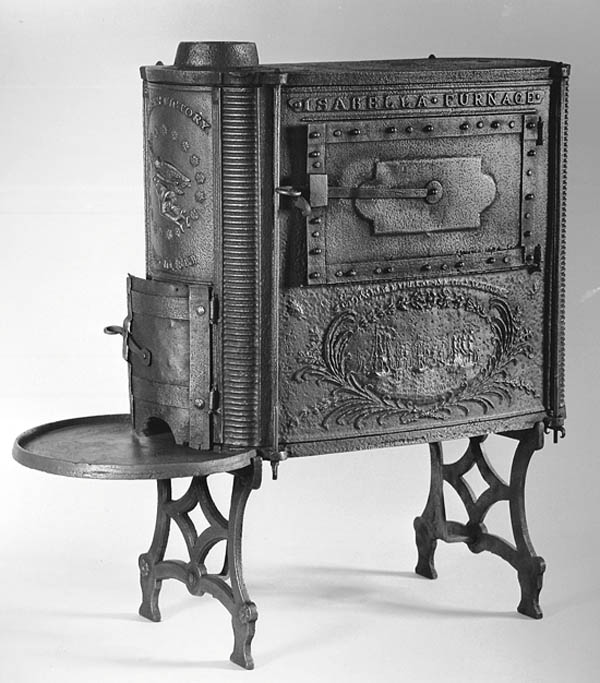Popular German-American Ten-Plate Stoves
When entering the second floor, of a house, one could see a 5-inch tin pipe extending from the floor through the ceiling, and then the pipe would enter the brick chimney, which would have been located in the center of the building. One would see ten-plate stoves on first and second floors with pipes reaching up through the ceiling and bent into a hole in the chimney. A fire hazard to be sure. On cold nights one would be thankful to sleep next to the stove or pipes running up into the attic chimney.
Meats were smoked in the garret next to the chimney, where a hole was made and the smoke would billow out onto the hanging meats. Usually these areas were walled in with beaded boards to form a chamber. The meats would be hung in rows on long sticks made of hickory. One often finds in the garrets of early homes of this era charred saplings, which were the roof supports, called purlins and tied into a beam that ran the length of the house.
Fireplaces
The fireplaces were central to the operation of the German-American kitchen because the cooking and sometimes bathing would occur next to the hearth. Clothes were hung by the fire for drying during the winter months. From the hearth crane hung wrought-iron pots, and on the hearth were additional pots and toasters, waffle makers and other implements. The hearth was usually constructed of large pieces of stone or brick to catch sparks that would snap and pop out onto the floor when the fire was underway. Solid shutters were installed across the opening of the fireplace on hinges to keep heat generated from ten-plate stoves from escaping up the chimney, or to keep other pests out during spring and summer. There have been raised hearths for cooking inside the walk-in fireplace with an arched opening underneath for the storage of wood. To find an extant raised hearth in a fireplace is an unsual sight today, because most have been removed. If one views old woodcuts carved by German craftsmen during the time of Martin Luther in the 1500s, one can plainly see the use of raised hearths in German homes for cooking.
A large square hand-hewn beam usually served as the lintel beam/mantel. Other hand-wrought implements of fireplace use were hung next to the fireplace along with leather bellows to tease fire out of the last ember.






